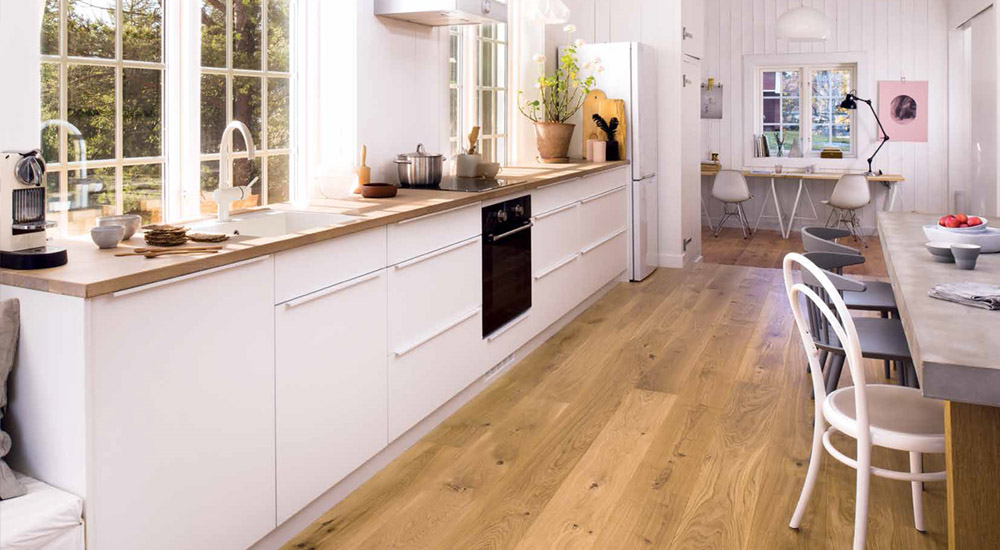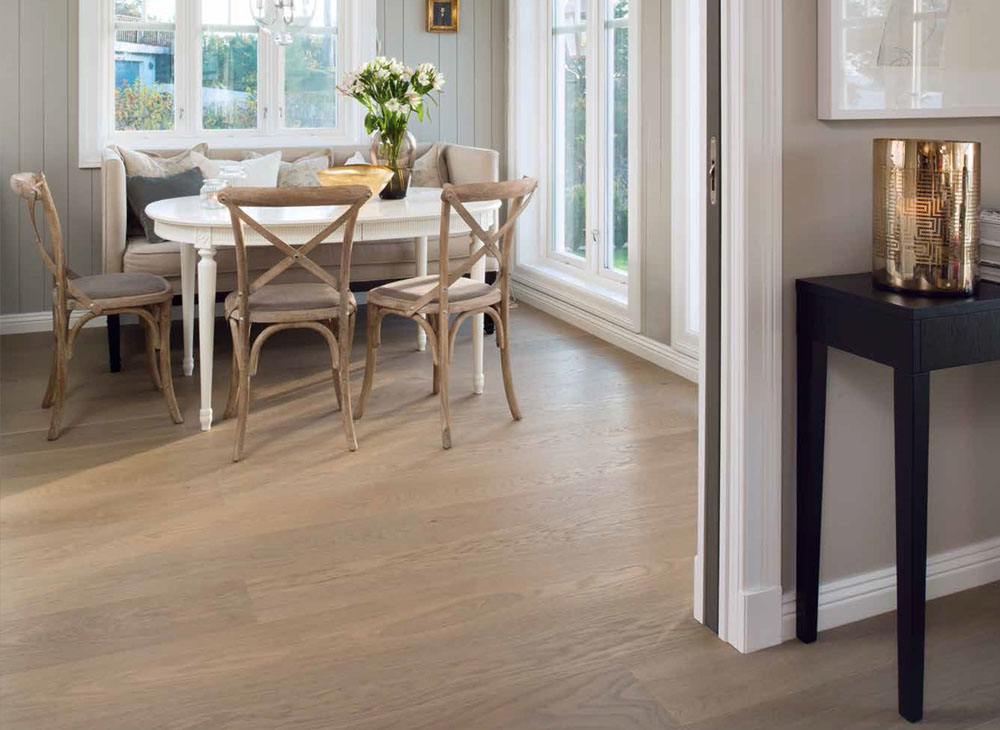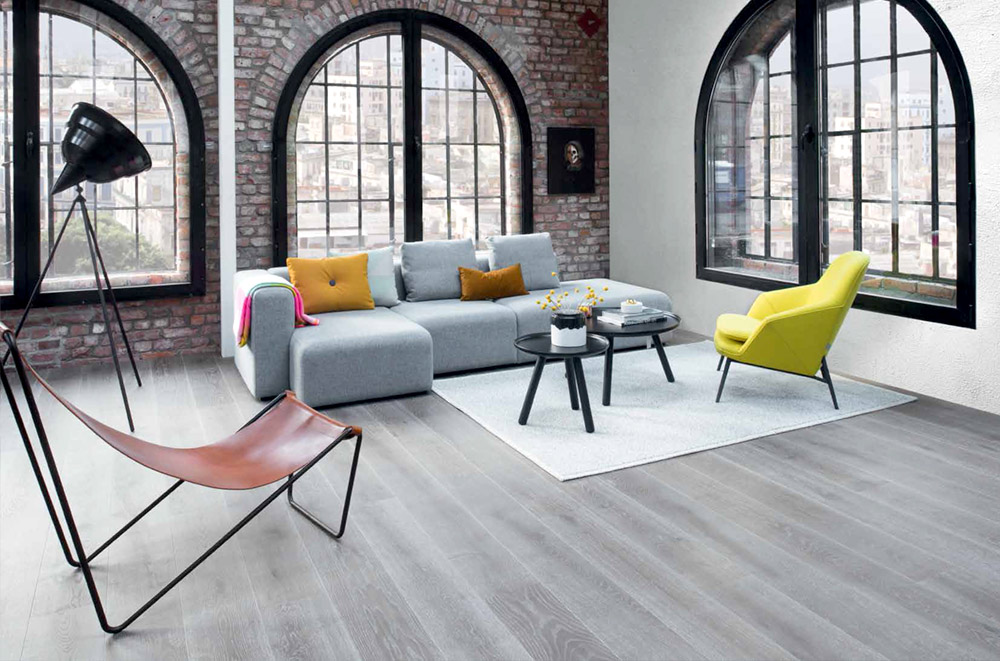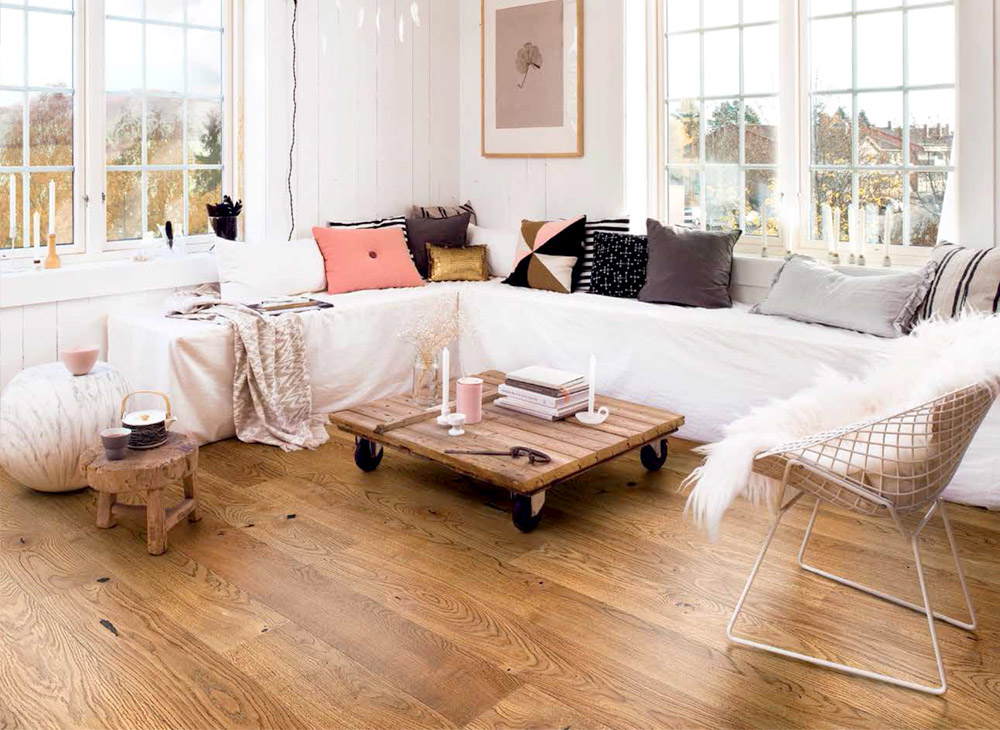| |
| Caring For Wood Flooring |
 |
| 'High quality hardwood flooring designed to suit your property perfectly'' |
|
|
| |
| Specialist
hardwood flooring solutions |
| When you get a hardwood floor, or move into a house with one, it is well worth taking note of how it has been finished. Different finishes don't need different care but should it become stained it will need different care. |
|
 |
Long lasting hardwood floors |
 |
Solutions designed around your property |
 |
High quality maintenance products |
 |
Installed to meet your individual needs |
|
|
|
|
| |
| |
| Caring for your hardwood floor with a surface finish |
|
Wood flooring needs to be cared for to get the most from it. This doesn't involve much and isn't much different to the care you'd need for any other floors. The vast majority of wood floors available on the market today will have a surface finish. This is typically polyurethane, a mostly inert plastic. This can be spotted by the often glossy finish that can look as if there is a thin layer of clear plastic over the top of the wood. You can back this up by running your hand over the wood.
A surface finish will smooth the finish, so the grain will either feel reduced or you won't be able to feel it at all. To be sure you can check by applying a small dab of a paint remover to part area of the floor. Pick an unobvious part of the floor (under a rug or sofa is a good idea) as a positive test for polyurethane will result in the surface finish bubbling. A surface finish will shield the floor from damage and staining by creating a thin protective shield over the top of the wood.
A surface finish is more resistant to impact damage and staining, but it can be spoiled by water. Any damage to the finish can trap water which causes further damage to the finish and the underlying wood. |
|
 |
| 'Our products ensure your hardwood flooring lasts a lifetime' |
|
|
|
| |
|
| |
| |
 |
| 'We can help maintain your hardwood floor to ensure a stunning finish at all times' |
|
| Maintain your wood floor with a penetrating seal |
|
A penetrating seal, as the name suggests, sinks into the wood to protect the uppermost surface of the floor. Oils and waxes will result in a soft satin or matte finish. If the grain is obvious to the touch then it is most likely that the floor was finished with a penetrating seal. A spot of paint remover applied to a wood floor with a penetrating seal will have no effect, but applying ammonia or a wax stripper will cause the surface to become whiter and softer. Oils and waxes do not provide the same level of protection as a surface finish as there is no real hard layer between the wood and any damage, but they do look more natural. A penetrating finish doesn't last as long as a surface finish and needs to be reapplied every few years.
A natural hardwood floor won't survive rough treatment very well, however minor damage can be sanded out and refinished. Sharp heels and heavy boots are the most famous causes of damage to real wood floors, but there are very few floors which do appreciate this sort of punishment. Heavy furniture can also leave its mark on the floor but this can be prevented by some pads to spread the weight of the furniture. |
|
|
|
| |
|
| |
| |
| Common causes of damage to hardwood floors |
|
The most common causes of damage to wooden floors are dust and grit, which can quickly erode the surface. Running a soft bristled broom across the floor once a day will be ensure that your floor isn't worn down by dirt. Vacuuming once or twice a week (using a brush attachment) will remove anything the broom misses. Be sure not to use any cleaning products which may adversely affect the finish. It is worth investing in a good doormat to help keep dirt and grit outside, rather than being brought into the house and ground into your floor.
Although a solid wood floor is more susceptible to damage than some other types of floor, the benefit of a real wood floor is that it can be repaired. Because it is solid wood all of the way through the surface layer can be sanded off to remove any damage. The floor can be refinished to a wide range of tones for a completely different feel to the room. This is a layer of guarantee which you simply don't get with laminates or vinyl, where damage to the surface is difficult, if not impossible, to repair without replacing. Which often leads to the floor having to be entirely replaced.
Natural wood can also survive the bleaching damage of the sun more effectively than artificial flooring. On top of that, any damage can be repaired using a new finish, something not possible with man made materials. |
|
 |
| 'We can provide you with a range of products that completely suits your needs'' |
|
|
|
| |
|
|
|

